Rehabilitation of Neglected Radial Nerve Injury following Humeral Shaft Fracture - A Case Study in Manual Therapy and Care therapy® Technology
Rehabilitation of Neglected Radial Nerve Injury following Humeral Shaft Fracture - A Case Study in Manual Therapy and Care therapy® Technology
T. Kassis¹, F. Zein El Abidine²*, M. Kanaan³, I. Lao4, M. Al Deek5
*Correspondence to: Dr Fadi Zein El Abidine, Lebanon.
Copyright
© 2024 Dr Fadi Zein El Abidine.. This is an open access article distributed under the Creative Commons Attribution License, which permits unrestricted use, distribution, and reproduction in any medium, provided the original work is properly cited.
Received: 12 Oct 2024
Published: 24 Oct 2024
DOI: https://doi.org/10.5281/zenodo.14044582
Rehabilitation of Neglected Radial Nerve Injury following Humeral Shaft Fracture - A Case Study in Manual Therapy and Care therapy® Technology
Abbreviation
CareTherapy: Capacitive-Resistive Energy Transfer
EMG: Electromyography
MRC: Medical Research Council
MT: Manual Therapy
NM: Neurodynamic
ROM: Ranges of Motion
Introduction
Humeral shaft fractures have been estimated to account for 1% to 3% of all fractures. They are usually caused by simple falls, motor vehicle crashes, and sports injuries. (1) Fractures of the humerus are often complicated by radial nerve palsy. The overall incidence of radial nerve injury after humeral shaft fractures is 11.8% representing the most common peripheral nerve injury associated with long bone fractures. This is attributable to the relatively fixed position of the radial nerve and the direct contact with the periosteum of the humerus as it turns in the spiral groove and passes through the lateral intramuscular septum of the arm. At this level the bone ends can easily entrap, contuse, or even lacerate the radial nerve. As such, radial nerve injury varies from Neurapraxia to complete Neurotmesis. (2) The hallmark of a radial nerve injury is wrist drop. Flexor tone overpowers the nonfunctional wrist extensors, and the hand is pulled into a flexed position. The wrist may be passively placed into extension, but the patient is unable to hold this posture, and the hand cannot be maintained in a functional position. In addition, extension of the fingers and thumb is lost.(3)
This report outlines the application of Capacitive-Resistive Energy Transfer (CareTherapy®) machine-assisted physical therapy for radial nerve palsy subsequent to the fixation of a humeral fracture using plates and screws.
1. Tracy KASSIS, Physiotherapist & Osteopath, Spine Care Centre – Lebanon
2. Fadi ZEIN EL ABIDINE, MD, Orthopedic Surgeon, Medical Advisor, Spine Care Centre – Lebanon
3. Michel KANAAN, DPT, Spine Care Centre – Lebanon
4. Iman LAO, Sports Performance Trainer, Spine Care Centre – Lebanon
5. Marianne EL DEEK, DPT, Spine Care Centre – Lebanon
Case Presentation
A 27-year-old male, professionally employed as a jeweler and exhibiting right-hand dominance, was involved in a road traffic accident. He was hit by a car on his right side; as a consequence, he sustained injuries to the right upper extremity, with no documented history of head trauma. Despite the incident, the patient maintained consciousness and orientation and was promptly transferred to a University Hospital in Beirut (Lebanon) for further evaluation and care.
After undergoing with an X-Ray and an electromyography (EMG) as advised by the orthopedic surgeon, the patient was diagnosed with right humeral shaft fracture associated with Axonotmesis of the radial nerve.
He underwent surgery in the arm. The surgical intervention involved the application of a plate and screws to stabilize the humerus (Figure 1), followed by a period of immobilization in an arm sling for four weeks. Despite the seemingly successful surgical outcome, the patient presented to our physical therapy department at Spine Care Centre in Beirut, six weeks post-surgery, expressing concerns regarding the loss of mobility in the elbow, loss of motor control in the wrist and facing challenges in grasping objects using the thumb and fingers of the right hand, with no signs of pain. However, sensation was normal over the full extremity dermatomes. Otherwise, the patient reports that he is in good health.
Figure 1: Humerus post-operation X-Ray
The patient presented with a guarded right upper extremity, compensatory weight shift, and postural asymmetries. While orthopedic exams affirmed successful surgery, they revealed a challenging situation - a blocked flexed elbow at 60 degrees and difficulties in wrist mobility due to radial nerve damage (Figure 2). Neurological assessments validated Axonotmesis of the radial nerve, classified as third degree according to the Sunderland classification system that defines five different degrees of peripheral nerve injury. In this degree, there is damage to the axons and their supporting structures within the nerve. Recovery depends on the number of endoneurial tubes damaged (4). This condition led to impaired motor control in the wrist and difficulties in effectively grasping objects with the right hand. Physiotherapeutic examination identified localized tenderness and joint restrictions in the affected areas. The integrated findings underscore the need for a collaborative, multidimensional approach to address the complex challenges in humeral shaft fracture and radial nerve injury rehabilitation.
Figure 2: Case Presentation Before Treatment
Management and Outcome
The patient undertook a course of treatment consisting of CareTherapy® machine and manual therapy (MT).
CareTherapy is a revolutionary method that is born from the synergy between advanced technology and clinical-scientific skills acquired over 20 years of experience in the field of energy transfer capacitive and resistive. The powerful bio-stimulation created deep in the tissues, produces significant analgesic effect, anti-inflammatory and especially of tissue repair, so as to greatly speed up the time for a complete functional recovery of the patient. MT was accompanied by neurodynamic mobilization (NM) to the radial nerve and stretching of the biceps muscle.
The ranges of motion (ROM) of the wrist and elbow are detailed in Table (1). Muscle strength evaluations for the elbow, wrist, and thumb were conducted using the Medical Research Council (MRC) Scale, which ranges from Grade 0 indicating no detectable contraction to Grade 5 for normal strength; (5) and the results are presented in Table (2). All superficial and deep sensations remained undisturbed.
|
|
1st Session |
30th Session |
||
|
Active ROM |
Passive ROM |
Active ROM |
Passive ROM |
|
|
Wrist Flexion |
74o (Wrist drop) |
|
74o (Wrist drop) |
|
|
Wrist Extension |
Unable to perform |
70o |
-10o |
70o |
|
Radial Deviation |
Unable to perform |
20o |
5o |
20o |
|
Ulnar Deviation |
10o |
35o |
15o |
35o |
|
Elbow Flexion |
60o – 150o |
130o- 155o |
10o - 150o |
150o – 155o |
|
Elbow Extension |
Unable to perform |
- 60o |
- 10o |
0 |
Table 1: ROM of the wrist and elbow
|
|
1st Session |
30th Session |
|
Wrist Extensors |
1 |
3 |
|
Thumb Extensors |
1 |
2 |
|
Wrist Flexors |
4 |
4 |
|
Thumb Flexors |
2 |
3 |
|
Elbow Supinator |
2 |
3 |
|
Elbow Pronator |
2 |
3 |
Table 2: Muscle strength evaluations
The rehabilitation protocol involved resistive dynamic CareTherapy, employing a frequency of 0.46MHz and a super-low frequency of 100Hz, with power settings ranging from 20% to 30% (Figure 3). The ground electrode was positioned on the contralateral scapula, while passive mobilization of the elbow was implemented. This therapeutic protocol was administered on a daily basis, lasting for duration of 30 minutes throughout the initial four days of treatment.
Figure 3: Resistive Dynamic CareTherapy Treatment
In the following phase of the treatment, the initial protocol remained unchanged, augmented by the introduction of isometric contractions targeting elbow flexion and extension. This modification aimed to facilitate the restoration of the complete ROM. In addition to the isometric contractions for elbow flexion and extension, we incorporated contractions for the wrist and finger extensors. This extension aimed to initiate the recovery of muscle movement affected by the radial nerve injury. After achieving the full ROM successfully, a systematic incorporation of NM for the radial nerve was initiated. The NM technique consisted of a sliding mobilization of the radial nerve. This protocol was administered on a daily basis, totaling 15 sessions in duration.
Following the initial 20 sessions, the treatment approach advanced with the integration of electrical muscle stimulation (EMS) targeting the wrist flexors and extensors, as well as the forearm supinator and pronators. Simultaneously, the ongoing strengthening exercises were sustained, with a progressive adjustment in intensity and duration based on clinical improvements. Upon completion of the rehabilitation program on the 30th day, significant improvements were observed in the parameters of ROM (Table 1), and muscle strength (Table 2) (Figure 4, 5).
|
Figure 4: Difference between 1st session and 30th session Figure 5: Improvement of the wrist ROM |
Discussion
In our case report patient´s main concerns were loss of motor control of the wrist, difficulty in grasping objects, and decrease in range of motion of the elbow post humeral shaft fracture.
The innovative technical characteristics of CareTherapy enable to transfer high levels of energy without causing significant temperature increases, allowing obtaining excellent results. Using the resistive mode, this method creates a transit current/field between the electrodes and the patient’s body resulting in the selective stimulation of the interposed tissues and promoting vasomotor, trophic and metabolic effects both locally and systemically.
While MT can be considered an established technique used by physical therapists, it remains one of the basic techniques of recovery used in most recovery programs. MT includes a wide range of therapeutic procedures such as massages, joint mobilizations/manipulations, myofascial releases, nerve manipulations, counter-stress, and acupressure.(6) In the context of this case, MT was employed to enhance joint mobility, particularly addressing the stiff elbow joint, and augmenting the range of motion. Furthermore, it played a pivotal role in expediting tissue repair, alleviating muscle tension, inducing a state of relaxation, facilitating movement, and priming the affected segment for subsequent exercise therapy. In addition to that, neural mobilization was also used in the treatment protocol. This technique is theoretically aimed at reducing physical “pressure” on nerves. It is thought that NM assists with facilitation of relative motions between nerves and adjacent tissues, decreases nerve adherence, assists with diffusion of noxious liquids, and improves neural vascularity.(7)
EMS was incorporated in the treatment; it activates muscles artificially through various electrical current forms, which are delivered through electrodes on the target muscles. As a result, electrical current induces involuntary muscle contraction which produces similar exercise benefits without much discomfort. More specifically, it was designed to facilitate passive activation of a large number of motor units and induce synchronous recruitment of muscle fibers, with the aim of strengthening or maintaining muscle mass.(8)
The success observed in our case underscores the effectiveness of supplementary therapeutic interventions, emphasizing the importance of addressing specific challenges and the role of physiotherapy & Caretherapy in post-humeral shaft fracture and radial nerve injury for improved patient functional outcomes and decreasing surgical complications.
Conclusion
When it comes to helping muscles get better and gain range of motion, physical therapists often use MT. This method relies on the therapist's hands to feel and treat the muscles. Even though MT is known to work well, adding CareTherapy made the healing process faster and simpler.
CareTherapy has many advantages, like improving how cells work, activating the body's natural repair processes, enhancing blood flow, and reducing pain. This makes it a valuable addition to traditional treatments as it makes the manipulative procedure easier and less painful.
It's important to note that while MT is a reliable method, combining it with CareTherapy brings even better results. Together, they make a powerful team, with MT addressing things like muscle tension and joint limitations, and CareTherapy providing its unique benefits. This combined approach is more effective than using each therapy on its own.
By using both CareTherapy and MT, we create a strong strategy for managing muscle problems, articular problems and neurological problems. It's like putting together puzzle pieces – when used together; they create a more complete picture and work better than using only one of them alone.
While the positive outcomes observed in this case study highlight the potential benefits of combining CareTherapy with MT, it is crucial to emphasize that a single case study may not be sufficient to confirm the overall effectiveness of this treatment approach. Further comprehensive studies with larger sample sizes are warranted to establish a more conclusive understanding of the combined therapy's efficacy and its applicability across diverse cases.
References
1. Rämö L, Sumrein BO, Lepola V, Lähdeoja T, Ranstam J, Paavola M, et al. Effect of Surgery vs Functional Bracing on Functional Outcome Among Patients With Closed Displaced Humeral Shaft Fractures: The FISH Randomized Clinical Trial. JAMA. 2020 May 12;323(18):1792.
2. Korompilias AV, Lykissas MG, Kostas-Agnantis IP, Vekris MD, Soucacos PN, Beris AE. Approach to radial nerve palsy caused by humerus shaft fracture: Is primary exploration necessary? Injury. 2013 Mar;44(3):323–6.
3. Ljungquist KL, Martineau P, Allan C. Radial Nerve Injuries. J Hand Surg. 2015 Jan;40(1):166–72.
4. Goubier JN, Teboul F. Grading of Nerve Injuries. In: Nerves and Nerve Injuries [Internet]. Elsevier; 2015 [cited 2023 Dec 21]. p. 603–10. Available from: https://linkinghub.elsevier.com/retrieve/pii/B9780128026533000877
5. Vanhoutte EK, Faber CG, Van Nes SI, Jacobs BC, Van Doorn PA, Van Koningsveld R, et al. Modifying the Medical Research Council grading system through Rasch analyses. Brain. 2012 May;135(5):1639–49.
6. Szabo DA, Neagu N, Teodorescu S, Predescu C, Sopa IS, Panait L. TECAR Therapy Associated with High-Intensity Laser Therapy (Hilt) and Manual Therapy in the Treatment of Muscle Disorders: A Literature Review on the Theorised Effects Supporting Their Use. J Clin Med. 2022 Oct 19;11(20):6149.
7. Scrimshaw, Sally V. B App Sc (Phty); Maher, Christopher G. PhD. Randomized Controlled Trial of Neural Mobilization After Spinal Surgery. 2001 Dec 15;p 2647-2652.
8. Yoo HJ, Park S, Oh S, Kang M, Seo Y, Kim BG, et al. Effects of electrical muscle stimulation on core muscle activation and physical performance in non-athletic adults: A randomized controlled trial. Medicine (Baltimore). 2023 Jan 27;102(4):e32765.
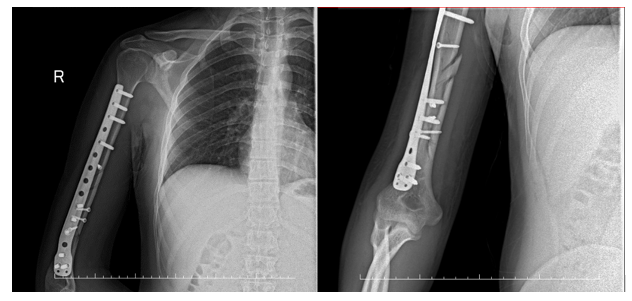
Figure 1
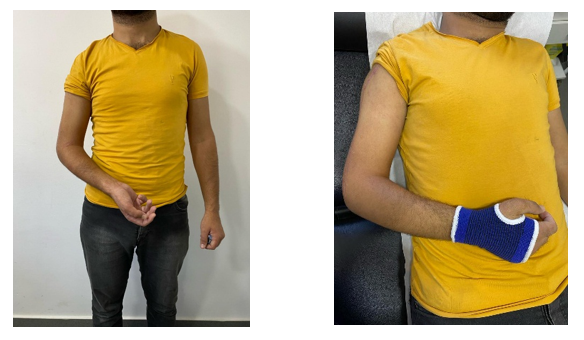
Figure 2
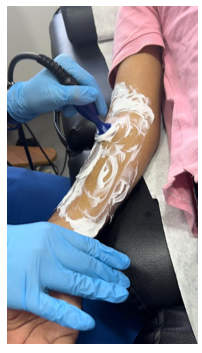
Figure 3
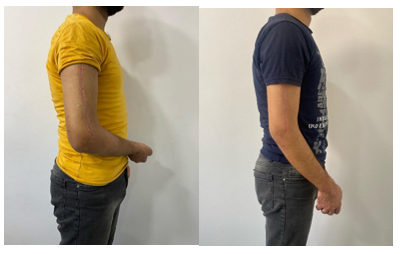
Figure 4
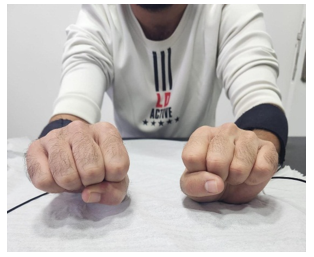
Figure 5
